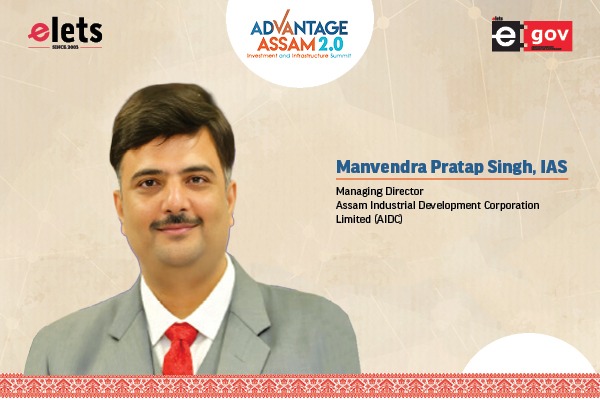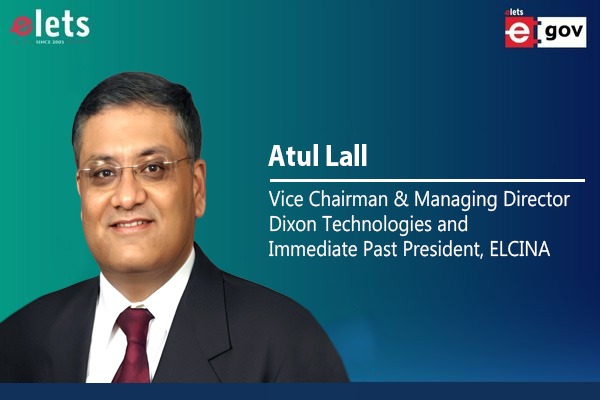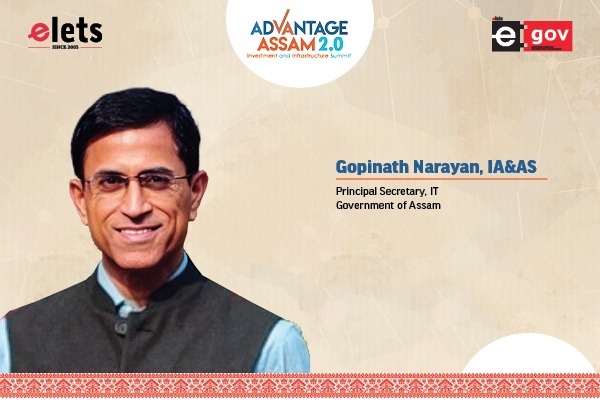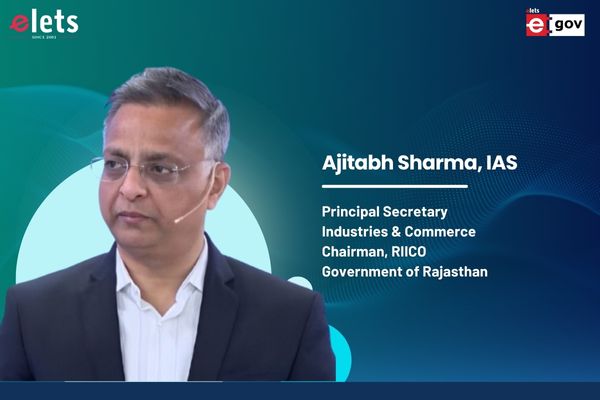 Clearly, the State of Bihar is in the throes of adopting e-Governance soon. With the new Chief Minister Nitish Kumar, the State has again become hopeful to see things moving at a fast pace. Currently, there is not much to showcase but Bihar would certainly like to emulate the most popular project e-Seva, which is easy to replicate, says Sanjeev Kumar Sinha, Secretary, Science & Technology, Government of Bihar, to Anuradha Dhar from egov.
Clearly, the State of Bihar is in the throes of adopting e-Governance soon. With the new Chief Minister Nitish Kumar, the State has again become hopeful to see things moving at a fast pace. Currently, there is not much to showcase but Bihar would certainly like to emulate the most popular project e-Seva, which is easy to replicate, says Sanjeev Kumar Sinha, Secretary, Science & Technology, Government of Bihar, to Anuradha Dhar from egov.
You have taken over as the new IT Secretary of Bihar in December 2005. What are your plans in taking ahead e-Governance initiatives in Bihar?
I have done lot of work in Bihar earlier. In 1997-98, during my tenure as Director, Treasury, I got all the treasuries in Bihar computerised. Later, I also got the GPF (General Provident Fund) computerised, which is still being implemented in all the districts.

These were my earlier initiatives. I have recently joined. Lot of things need to be done, as you know much has not been done in Bihar. We have to start almost with a clean slate and so many things are on my priority list such as having a roadmap for e-Governance. We are already working with NIC, and the work has already been sub-contracted to Wipro. In the meantime, several departments are working on e-Government initiatives. Commercial Taxes department has developed its own website. Registration Department has also done a lot of work and they have expanded to many of the field offices. Transport Department is already using the software. I myself did some work on a pilot basis when I was Divisional Commissioner, Munger.
What are the key challenges you are facing to implement IT at the government level?

As far as government organisations are concerned, inertia is certainly there. Let me tell you what I have realised when recently I implemented one pilot project in Munger– Inter Office Communication. Suppose my office is to send letters to different Collectors. The other side was expected to see that the letter has been received and they were supposed to enter the date of receipt and then my office would come to know that this letter has been received. But there is lot of inertia in entering the data including from my office and that of the recipient’s. I want to remove this s inertia. If data needs to be entered then the employee thinks that this is an extra job and that he/she is not paid for this. They simply think that this would become permanent when done regularly. The other difficulty is that they do not know the entire technicalities. They would think that if some mistake is done then tomorrow they might be penalised or may face problems of other kinds. We need to remove this fear from their mind, and get them trained and motivated. There is also a need to pay them some extra remuneration because if we try to involve any private agency we have to pay them in any case. They are the custodians of the data. They are the custodians of the files. They will not part with the data. Now they say that if we give that file or letter to them then where is the guarantee that we will get them back. Now this is a matter of concern and their apprehension is valid because they say that the information is confidential and it would be difficult for them to part with. So we have to come up with some solution that may work. This is the phase that I consider them as the starting stumbling block, and for that I have already taken some initiative and trying to train all the employees up to Class III because they are the key players. In my opinion e-Government cannot be implemented until and unless you have a backend for it. This will make it strong because what is happening that we are basically jumping to the top of the hill without making the foundation strong.
Creating a website is the simplest thing to do in e-Government. The most important thing is to ensure that the website has a proper system and data should be appropriate, adequate, accurate and up-to-date. Only then this should be treated as permanent and final. Until and unless we reach that stage there would not be any value of the data. I have already instructed my department on how to use email accounts. Currently, we do not have infrastructure to provide email account to all the employees. I have requested NIC to provide the available infrastructure and create email account of all employees. I am planning to bring this into effect soon.
What about capacity building and training of the employees?
I am also trying to make all employees net savvy so that the objective of e-Government is achieved easily and effectively. I have already started working in this direction. We have started to train employees in using email and providing them computers. We will have training of trainers. From each department at least two or three employees would be trained as to how to use computers, and then they will in turn train other colleagues. That is how we are going to cover the entire Secretariat. Then we will go to the field access. For field access we will have Deputy Collectors who will be imparted training, and later on would similarly train others. We have already spent Rs. 50 lakhs for the training of employees.
When do you expect Bihar e-Governance roadmap to be there?
I do not know at this point of time because we are on the verge of signing an agreement and then this will take about 3- 4 months, which will depend upon the efficiency.
What kind of political buy-in is there for e-Government projects in Bihar?
Right now, everybody is keen and wants that something should be done immediately. Recently, there was an NRI meet and a lot of demand made from them. They want an interaction with the government easily and on a frequent basis. We are going to launch a website for NRIs as well. This would be later extended to other investors.
What is the allocated budget for e- Government in Bihar?
It is about Rs. 48 crore at present. This is just to start with. As we move on we will get more and more funds.
Keeping in mind the strengths of Bihar, are you planning to take e-Government initiatives in some specific departments, which would further accentuate them?
I am basically in touch with agriculture workforce and specialised artisans. There is scope for tourism. I do have some idea but am still yet to get government’s approval. However, I have nstructed departments to publicise this and get advertisements published in Newspapers. Currently, there are thousands of unemployed waiting to get the right opportunity and avail jobs. Through e- Governance, the State government can help them through the website to find the right kind of job. The government can actually facilitate this, as this would be quite easy. My idea is to create a format and place the inputs. Either you invite them to your offices and get the data captured or engage some private agency and get everything captured, process the data, and then map that individual. This would enable to know that the particular individual is fit for a particular job. In this way the employability of the individual would be increased through right assessment and he/she would be able to get the right kind of job.
Is agriculture department also implementing any e-Governance project right now for farmers?
Right now, nothing is being done regarding this but we do have some plans. At some stage, projects would surely be implemented.
Any specific model, which you would like to showcase as part of your successful endeavour?
One project that is very popular is e-Seva, which is something easy to replicate. We would like to emulate this in Bihar as well for making available various kinds of services to the public.
e-Government Grants Program of the Development Gateway Foundation
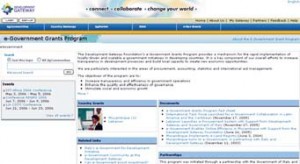 The Development Gateway Foundation’s e-Government Grants Program provides a mechanism for the rapid implementation of locally-driven and scalable e-government initiatives in developing countries. The steering committee includes representatives from the Government of Italy and the World Bank. They are particularly interested in the areas of procurement, accounting, statistics and international aid management. It provides a framework for rapid deployment of e-Government projects within national e-Government strategies, delivers immediate operational value for partner governments, provides donors and recipients with low-risk test vehicle for large-scale initiatives and its collaborative
The Development Gateway Foundation’s e-Government Grants Program provides a mechanism for the rapid implementation of locally-driven and scalable e-government initiatives in developing countries. The steering committee includes representatives from the Government of Italy and the World Bank. They are particularly interested in the areas of procurement, accounting, statistics and international aid management. It provides a framework for rapid deployment of e-Government projects within national e-Government strategies, delivers immediate operational value for partner governments, provides donors and recipients with low-risk test vehicle for large-scale initiatives and its collaborative
approach allows additional co-funders to join.
The objectives of the program are to:
• Increase transparency and efficiency in government operations
• Enhance the quality and effectiveness of governance
• Stimulate social and economic growth
Till date grants has been made to Government Electronic Network (GovNet) Pilot Project, which has connected 15 public administrative entities in Maputo, Mozambique, for improved internal operations and better service to citizens and Land Information Management System, to digitize land records in Mozambique. Three e- Procurement projects in the Middle East and North Africa were launched in 2005 and many other projects are in the process of review.
Be a part of Elets Collaborative Initiatives. Join Us for Upcoming Events and explore business opportunities. Like us on Facebook , connect with us on LinkedIn and follow us on Twitter, Instagram.
"Exciting news! Elets technomedia is now on WhatsApp Channels Subscribe today by clicking the link and stay updated with the latest insights!" Click here!




